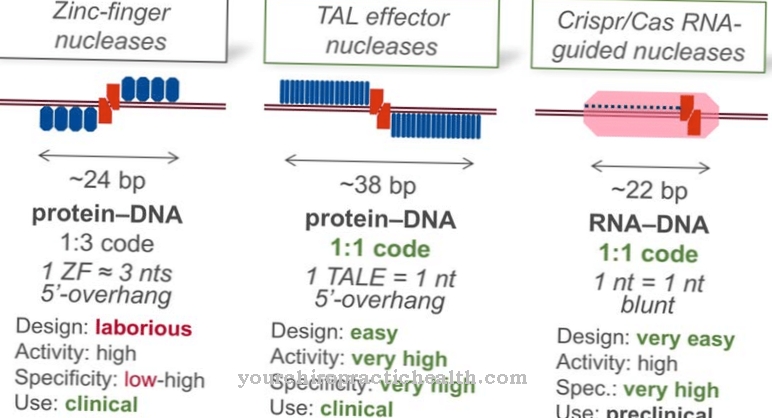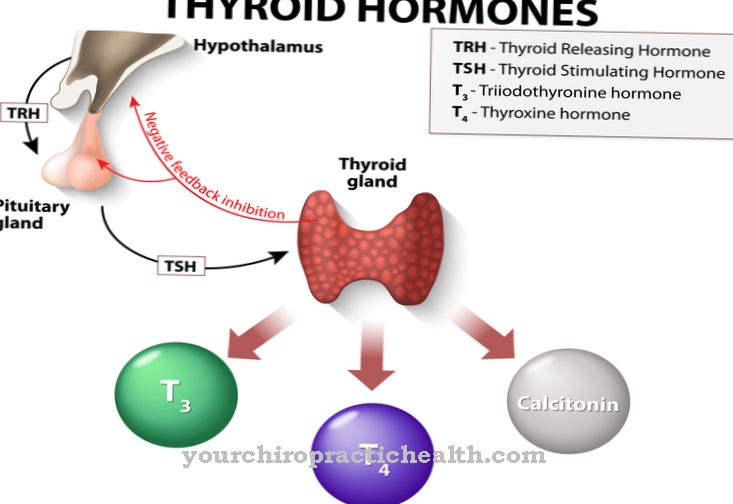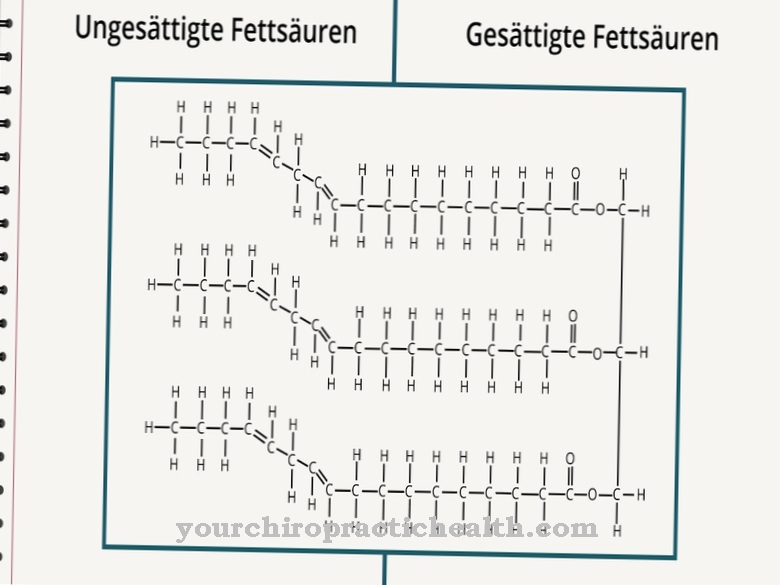Inosine is a nucleoside of RNA from the group of purine bases and is synthesized from the nucleoside adenine via the intermediate stage hypoxanthine.
The rarely occurring inosine with associated D-ribose as a sugar molecule has special functions. Inosine is the only nucleobase in the phosphorylated form as a nucleotide that can be paired not only with one but optionally with the three nucleobases cytosine, adenine, guanine and thymine as complementary partners (anticodon).
What is inosine?
Inosine is a nucleoside that occurs exclusively in RNA and is synthesized in the metabolism of the nucleobases from adenosine via hypoxanthine as an intermediate stage. The modified bicyclic five- and six-membered ring of the purine serves as the basic structure.
The attached ribose sugar molecule consists of the pentose beta-D-ribofuranose. The chemical formula C10H12N4O5 shows that inosine consists exclusively of carbon, hydrogen, nitrogen and oxygen, substances that are ubiquitous. Rare trace elements or minerals are not required for the synthesis of inosine. Normally, nucleobases form a connection with a specific other nucleobase via hydrogen bonds as complementary partners.
The rarely occurring inosine is the only nucleoside of the RNA that can optionally pair with the nucleic bases cytosine, adenine, guanine and thymine as complementary partners. The possible pairings are associated with increased energetic expenditure for the body, especially if only guanine or thymine are available as complementary bases. Inosine, like the other nucleobases, can be recycled or else completely broken down into uric acid in the liver via the purine metabolism.
Function, effect & tasks
Inosine is produced as part of so-called RNA editing, in which the original nucleoside or nucleotide sequence of the DNA no longer matches the copied form of the messenger RNA (mRNA).
The essential biochemical process consists in the fact that adenosine as the starting substance is converted into inosine by the enzyme adenosine deaminase (ADA) by deamination and elimination of water. The same process also takes place when deoxyadenosine is converted into deoxyinosine. The enzyme can be detected in almost all tissues. It is found in greater concentrations in the lymphatic tissue, especially in the thymus. This already suggests that inosine and deoxyinosine play a role in the immune system.
This is particularly evident in the presence of a genetically caused ADA enzyme deficiency. The enzyme deficiency leads to an inhibition of the B and T lymphocytes, so that lymphopenia, a pathologically noticeable low concentration of lymphocytes in the blood, can develop. In addition, inosine is said to have antiviral effects. Another effect of inosine, which is currently being discussed by experts, is the influence of the nucleoside on the regeneration of nerve tissue after injuries or strokes. Inosine is used as a medicine or dietary supplement in order to benefit from the antiviral effects and to increase performance during vigorous muscular activity.
The performance-enhancing effect comes about through the increased formation of adenosine triphosphate (ATP), which the muscle cells use to obtain their energy. Inosine is also used in subacute sclerosing panencephalitis (SSPE) to stop the course of the disease as much as possible. The disease, a form of inflammation of the CNS, is caused by a so-called slow virus infection with an extremely long incubation period, but shows a serious course during the acute phase. The effect of inosine to slow down Parkinson's disease is currently the subject of controversy.
Education, occurrence, properties & optimal values
Inosine can be synthesized by the body itself via the purine metabolism or obtained by catalysis of proteins containing adenosine. The adenosine obtained from catalysis is deaminated by the enzyme ADA and converted into inosine by splitting off a water molecule.
Despite the ability of the body to use inosine from its own production if necessary, the nucleoside is present in many foods in significant concentrations, especially in meat, meat extracts, household yeast and even in sugar beet. An excess of inosine is metabolized via the purine breakdown process in the liver and broken down into uric acid, which is mainly excreted in the kidneys, but also to a small extent through sweat, saliva and the intestines. Inosine is often taken as a dietary supplement to increase muscular muscle strength and the ability to concentrate.
Since inosine hardly occurs in free form in the body and the concentration has to adapt quickly to changing requirements, there is no reference value as a measure for an optimal supply. Excess insosin is completely broken down in the course of the purine metabolism. At most, there may be an increased concentration of uric acid, which can lead to the formation of urinary stones.
Diseases & Disorders
One of the greatest dangers associated with inosine deficiency is a genetic defect that causes a deficiency in the enzyme ADA, an enzyme that deaminates adenosine and converts it to inosine by splitting off a water molecule.
The resulting lack of inosine has an inhibitory effect on the formation of lymphocytes, so that the immune system is restricted in its effectiveness. The opposite of a deficiency, an oversupply, is largely compensated by the body without any discernible physiological effects. It only increases the uric acid level due to the high metabolism of inosine via the purine breakdown process. Existing diseases like gout can be aggravated by the increased uric acid levels.
This can also promote the formation of urinary stone conglomerates. Allergic skin reactions such as urticaria and erythema have also been observed due to the increased uric acid level. Inosine should therefore not be taken as a medicinal product or in the form of a dietary supplement in the case of existing diseases such as gout, kidney stones, autoimmune diseases and in the case of known pregnancy and breastfeeding (contraindications).



.jpg)




















.jpg)



